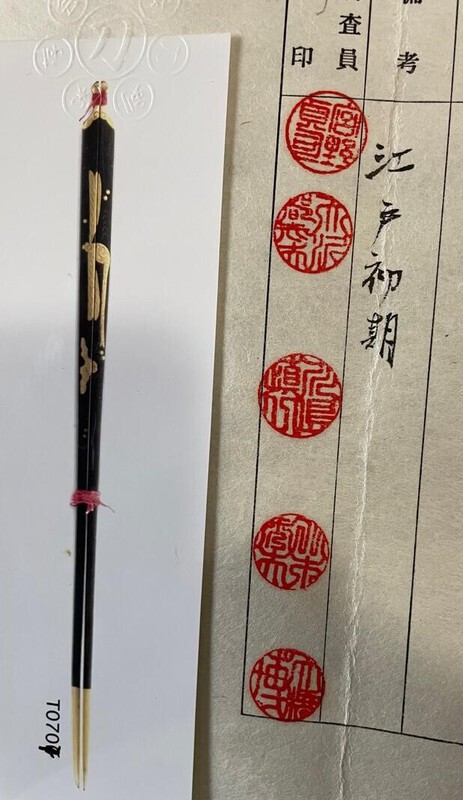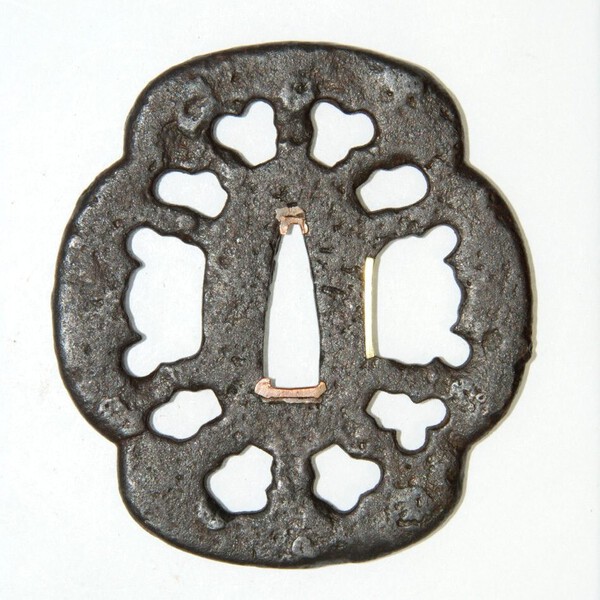-
Posts
703 -
Joined
-
Last visited
-
Days Won
4
Content Type
Profiles
Forums
Events
Store
Downloads
Gallery
Everything posted by Ron STL
-
Thanks Tom, I'll check that out. One of my ex-tsuba I bought back in Chicago this show. Ron STL
-
This (Higo/Jingo style) tsuba has seal scrip style characters on one side. It would be interesting to have these understood. Anyone able to read these? Thanks, Ron STL
-
Thanks Mauro and also Piers for this info and kanji. Will help make a file for this Sendai tsuba. Ron STL
-
Yes, I used to correspond with Dr. Lisenden because of an interest in namban, and did buy his book on namban. Always sad to lose a scholar. Earlier, Piers mentioned not seeing anything on the worksheet mentioning Sendai. Here is what that is called out. As to my tsuba, I will look further into these other Sendai tsubako to see what can be learned. Meanwhile I suppose the tsuba will remain late Edo, made by an unknown Sendai tsubako. Hope everyone enjoyed this thread. I will get the descriptions written in script translated in full. That's why we have Markus around. Thanks again, Ron STL
-
Thanks for the thoughts on this "Sendai" tsuba. First, with tsuba in hand there is nothing indicating this tsuba has been cast, to my eye. Originally, I thought the raised branch and leaves were done by sukedashi but looking closely (detai) it might be possible (but difficult?) the leaves and branches were "set into" the plate. I see no outlining of the raised decorations to support this, just that odd "plate" appearance at end of the one branch. The gold would be a heavy nunome zogan. What I have attached is the worksheet details which I have yet to get translated, so maybe this is a good time for that. As for any "bones" showing in the plate, I see none. That pesty "dent-whatever" remains a puzzle, but it definitely does not appear as a blister or loose forging. Meanwhile, I'll try and check up on Kiyochika from Sendai and see if he was connected to a specific group working in Sendai. Books tend to list schools of tsuba ko but I've found none indexed to places other than the classic Owari, Kyoto, etc. groups. Will look forward to what else might solve this conundrum of mine. Thanks guys, Ron STL
-
This iron tsuba is a favorite of mine but I've been puzzled as to what group to put it in. At the recent Chicago NTHK/NPO shinsa it reached a pleasing 76 pts attributed to simply "den Sendai" late Edo. This call puzzles me in that I can't find anything on iron tsuba ko working specifically in the town of Sendai. I'm at a loss at this time to locate information on where to look for further information. Hopefully someone here can point me in the right direction. Thanks. Ron STL
-
Thank you. I could not recognize the "sukashi tsuba" which I thought was should be. Was hoping for an attribution since the tsuba is quite nice with shibuichi mimi added. Seems different than typical Kyoto work. Ron STL
-
-
Appreciate the known background on this group Mogusa. At first I was skeptical on calling this a ko-dashi because of a memory of a ko-dashi by Osafune Nagamitsu I was in Ueno Museum years ago. That was a magnificent blade with strong sugata. But this sword is polished down quite a bit but still healthy, just not as strong as the Nagamitsu. At this point I think the wise next step would be to make sure my friend gets this to Mr. Tanobe for his judgement and go on by his recommendations. Ron STL
-
A recent study sword this past weekend a wakizashi-size sword signed tachi-mei NOBUHISA. The sword has good age, possibly Kamakura, based on the nakago. Interestingly, The mei appears above a very old (original) mekugi-ana as was often done on early swords. The sword is a little machi okura which make this "original" ana set 4-fingers down from what would have been the original ha machi, again an early trait. The sword has had nice nie hataraki brough out with finger stones running along a slightly narrow hamon of, let's call it a midare hamon. Utsuri can be seen "hanging down" from the narrow shinogi-ji. I have no photos of the sword because of its out-of-polish condition. A knowledgeable opinion was expressed earlier judging the sword to possibly be a ko-dachi of the Mokusa-kaji who made swords in Mutsu Province since Heian times. My question today is where to find more information on this group of swordsmiths. I found several listed in the Meikan but being in Japanese text, I cannot read these entries. An interesting sword that may eventually be sent to Japan for answers and restoration, if that's warrented. Any comments will be most welcomed, especiatlly where to find additional info on this Mutsu group. Ron STL
-
Thanks Steve. I should have looked closer at this post since this was already answered, earlier. Ron STL
-
I did have another question regarding the hidden cross on this kogai. This photo shows the section on the NTHK origami that covers motif, I believe. Can someone tell me if the cross is mentioned here? Thanks, Ron STL
-
I've been trying to figure out which organization issued these papers. Something I'm missing here. Thought I recognized the various origami. Thanks. Ron STL
-
Thank you all for explaining this motif and verifying it for me. I would have never gotten to that conclusion along. I am also so pleased to learn more about the Ikeda and their use of the crossed scrolls amulet. I did not notice the "crossed scrolls" positioning resembling a cross. It's what the eyes "see" when looking at these mon and pointing out the importance of observing things more closely. I will share this information with our few local fellows today when they visit. Ron STL
-
The cross becomes hidden with the kogai is placed into the saya. I too figured it may be a later addition but interesting to think about possibilities. Ron STL
-
Here is a shakudo kogai signed by Mitsuyuki, who is also Ryujo Teiho, 6th generation of Shichirobe family, son of Goto Kyujo. The motif, which looks like a scroll, is what I'm trying to identify. In Elements of Japanese Design I came across a similar motif under "Amulets." In the text is some interesting comments on Christian crosses which may or may not relate to this kogai. The NTHK(NPO) has some description of the motif which I can not translate without help. Does anyone know if this scroll-like motif is indeed an amulet or is there another name for this motif. As always, I am trying to correctly describe favorite items from my collection. Photos show the details and the books comments. As always, thanks for your help. Ron STL
-
Thanks Steve, must have this here somewhere. Ron STL
-
Steve, I'm wondering which specific book by Wakayama did you find this information? I have Tosho Kinko Jiten, Vol 3, by Wakayama but do not see Ujiie listed there, so you might be looking at a different volumn in the set. The only other volume I have is on menuki. These two came from Albert Yamanaka decades ago. Ron STL
-
Steve, this is what I was looking for, so thanks for pointing this out and also explaining the probable explanation of the shinsa team's being so specific. I have Wakayama's book and Marcus's indext but didn't notice the listing. I'll certainly check this out again. Before this, I was ready to give up searching. Often, I miss the meaning of "Den" when used like this. Thanks again. Ron STL
-
Will check that out. I looked at Markus' booklist and indexes but may have missed this title. Ron STL
-
Sorry Geraint, I intended to type wari kogai. Was hoping someone had some answers for me today but will wait and see what arrives this week. Meanwhile I will continue searching my library. Ron STL
-
Here is an umabari depicting a beautiful dragonfly in hirazogan. Recently my friend who sold me this found misplaced NTHK(NPO) papers for it. I was please to see the attribution attributing it wo Kaga Ujiie 3rd generation. Before, I was puzzled trying to place this, so was excited to see it was Kaga kinko. Since, I have been unable to locate anything on sandai Ujiie. My hope is that one of you can point me to some meaningful information of this Ujiie so I can learn about his work. Something directed the shinsa team to sandai. Unusual about this umabari is that the small male/female post the positions the two pieces is not this (made that way). My friend had somebody translate the papers which placed sandai as working early Edo" if that reads correctly. I have other Kaga kinko which are so beautiful, but not in this style, so that might be connected to what family made this piece. Ron STL
-
Thanks Mauro. I've not seen Markus' book before and needs to be purchased. I agree that kuruma -sukashi is a simple way to describe this. Simple is best. Ron STL
-
We see Yamakichibei and copies made with all sorts of sukashi piercing through the plate. Some of these piercing can be described as they look, others could represent many things. One the attached example from the internet shows the hitsuana in "three lobed" pattern while the other disignes are odd shapes. I've found several terms for these but wonder if these are correct descriptions or not. Found: suhama, suhama-gata, suhama-chiri...described as "island shaped, three lobed, scattered like islands. Referred to as "three-lobed" was found on something Haynes wrote. The other definitions came from Nihonto Koza. Any suggestions on how correct any of these terms are? (I also noticed that most book descriptions do not try to describe these, perhaps the best solution.) Ron STL
-

Help on finalizing three tsuba descriptions
Ron STL replied to Ron STL's topic in Translation Assistance
I see what happened yesterday. I apparently created another "thread," not sure how. Thanks Morikame for pointing this out. Ron STL












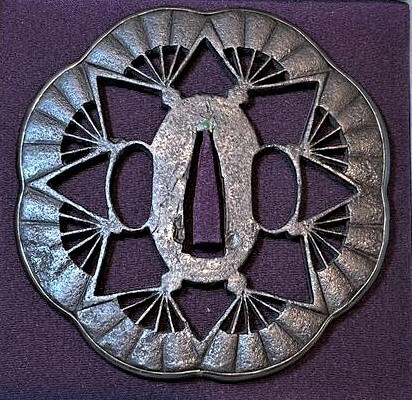
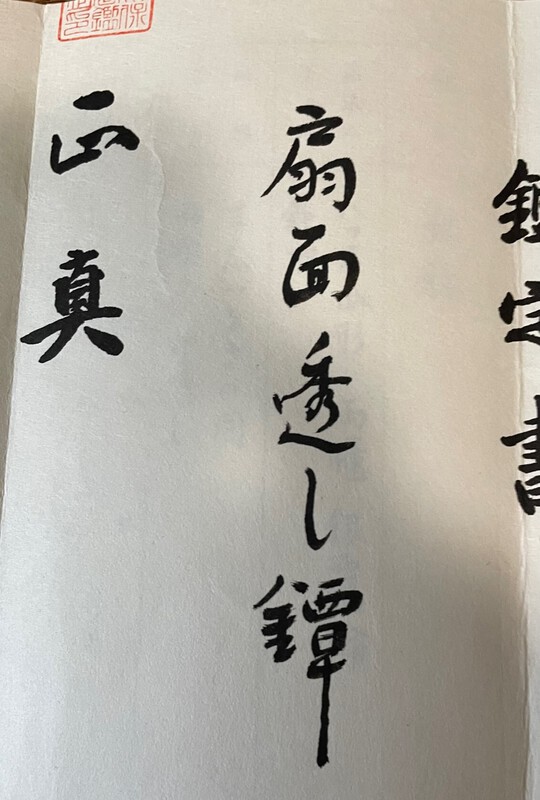
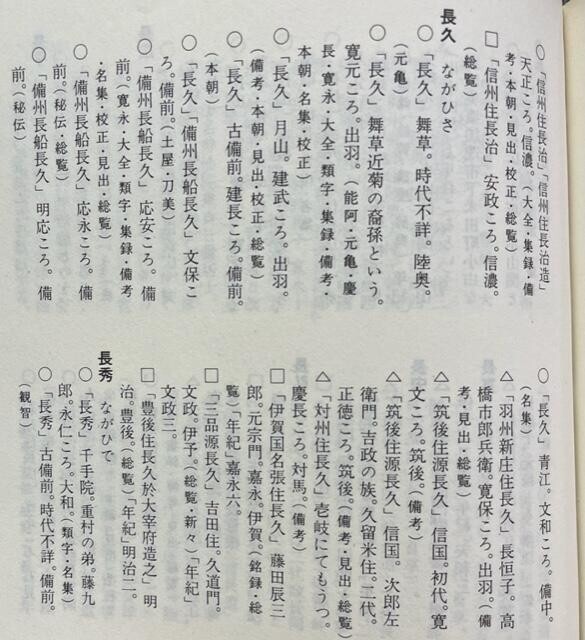
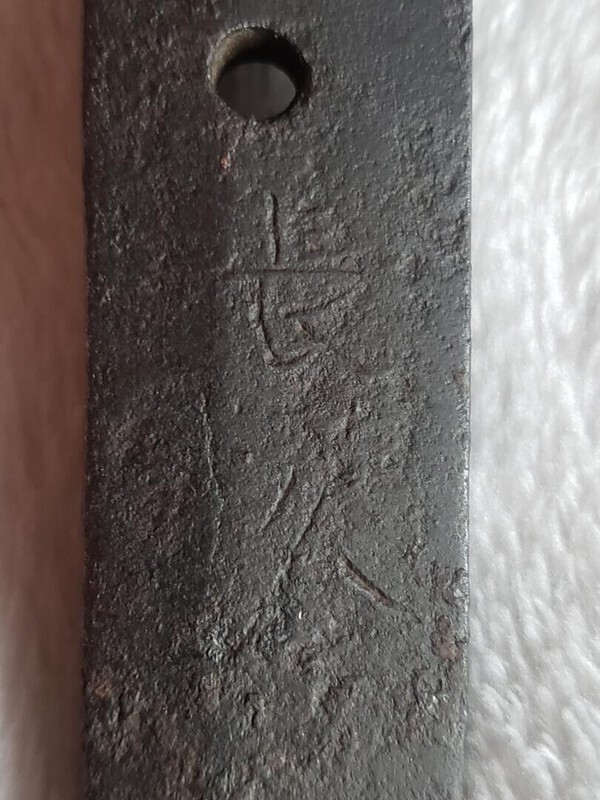
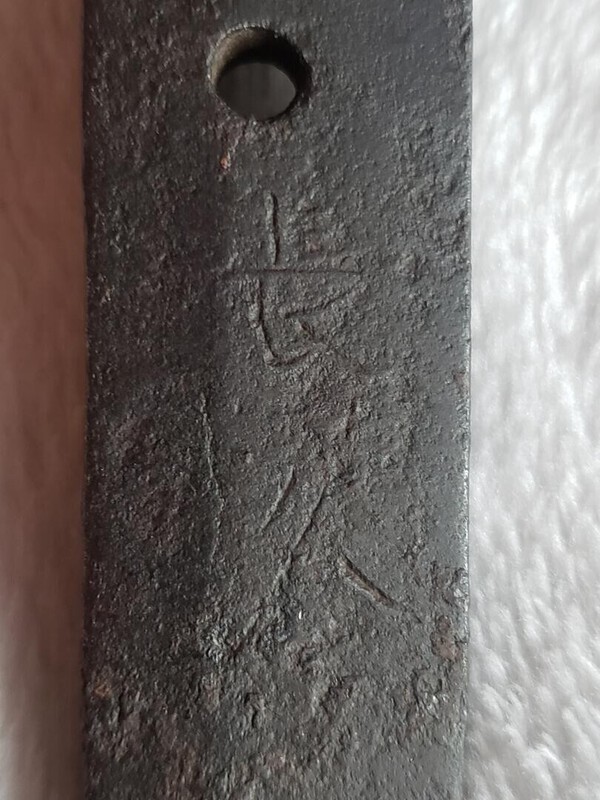











.thumb.jpg.e0465df347db14f7252132c1117a8705.jpg)

